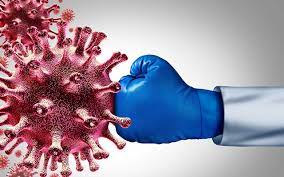The is a collection of cells and proteins that help protect the body from foreign invaders like bacteria and viruses. The helps the body recognize and fight off these pathogens, and it does this by specifically targeting them. In this article, we’ll learn more about the and how it works.
The is an important part of our body’s defense against infections and illness.
The immune system is made up of different cells and proteins that work together to protect us from harmful substances in the environment and from other people.
The starts working when we are expose to something harmful, such as a virus or bacteria.
The tries to fight the infection by attacking the substance that is causing the infection.
If the can’t get rid of the infection, it can cause health problems.
The is important for keeping us healthy and preventing infections from happening in the first place.
The immune system consists of different cells and tissues that work together to protect us from infection.
The is make up of several different types of cells, including white blood cells (leukocytes) and lymphocytes.
The white blood cells fight against infection by attacking and killing the bacteria or virus.
The lymphocytes help to distribute the antibodies that are produce by the white blood cells.
The is constantly working to protect us from infection.
The immune system can be divide into three parts: the innate (or natural) immune system, the acquired immune system, and the memory* immune system.
The innate is responsible for defending the body against infection before it has a chance to become established. It includes cells like macrophages and dendritic cells that can identify pathogens by sight, smell, or touch and destroy them. The acquired is responsible for learning how to fight infections and diseases over time. It includes cells like T-cells, B-cells, and antibody factories that are activate by exposure to a pathogen. Memory* is responsible for recalling previous encounters with pathogens so that the acquired immune system can better fight them the next time they come around.
The innate immune system is make up of cells that are present in the body from birth or soon after birth. These
cells are call phagocytes and they are able to recognize and attack foreign particles, such as bacteria and viruses. The adaptive
is a response to an invader that has been seen before. It consists of cells that have been alter
by exposure to a disease or some other stimulus. This system can help the body fight infections more effectively.
